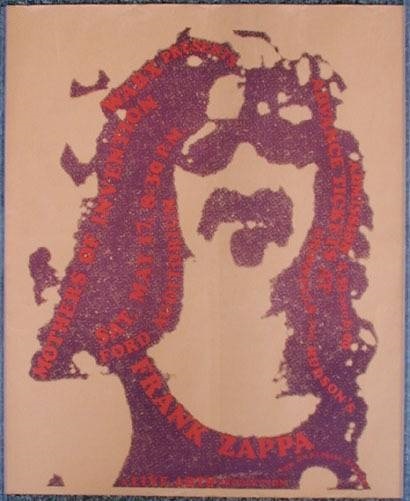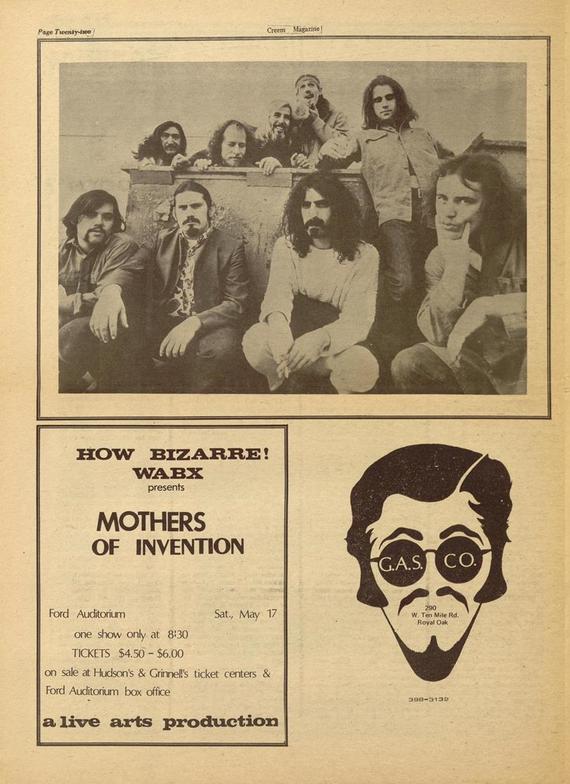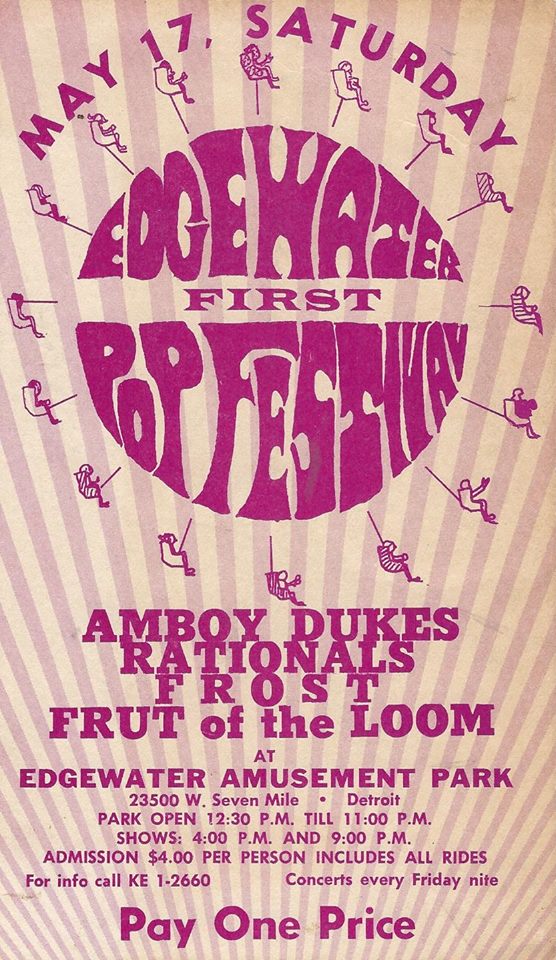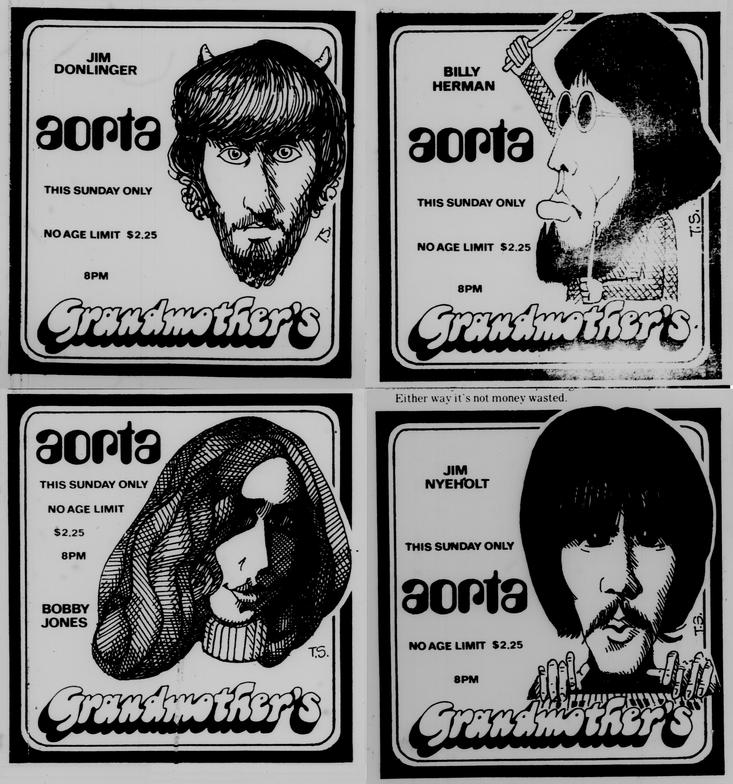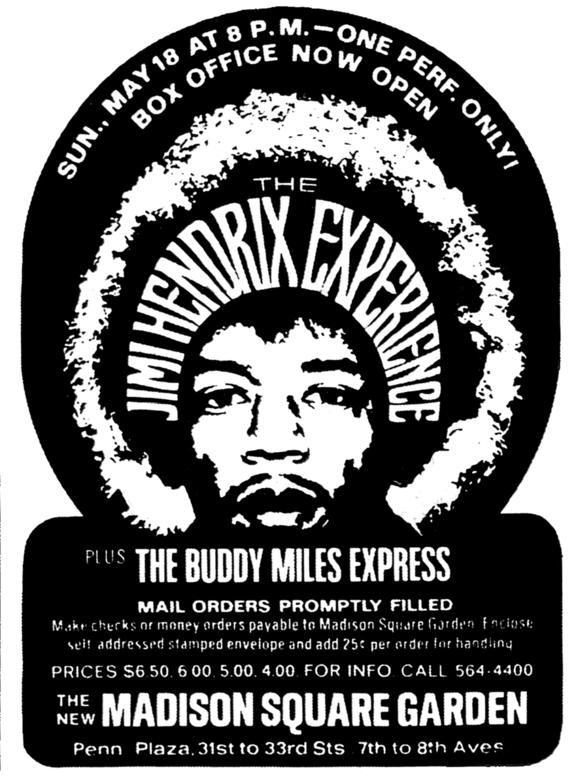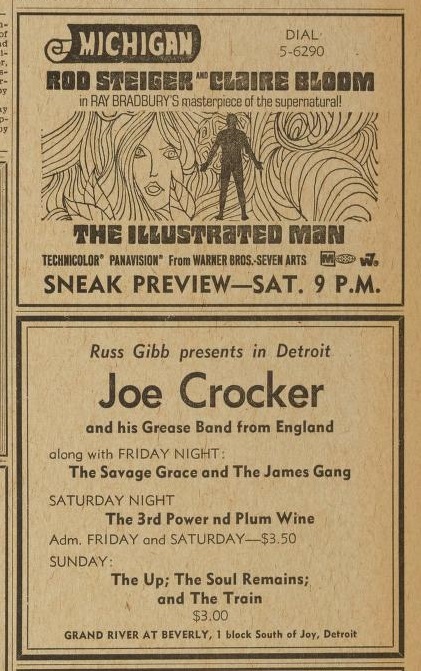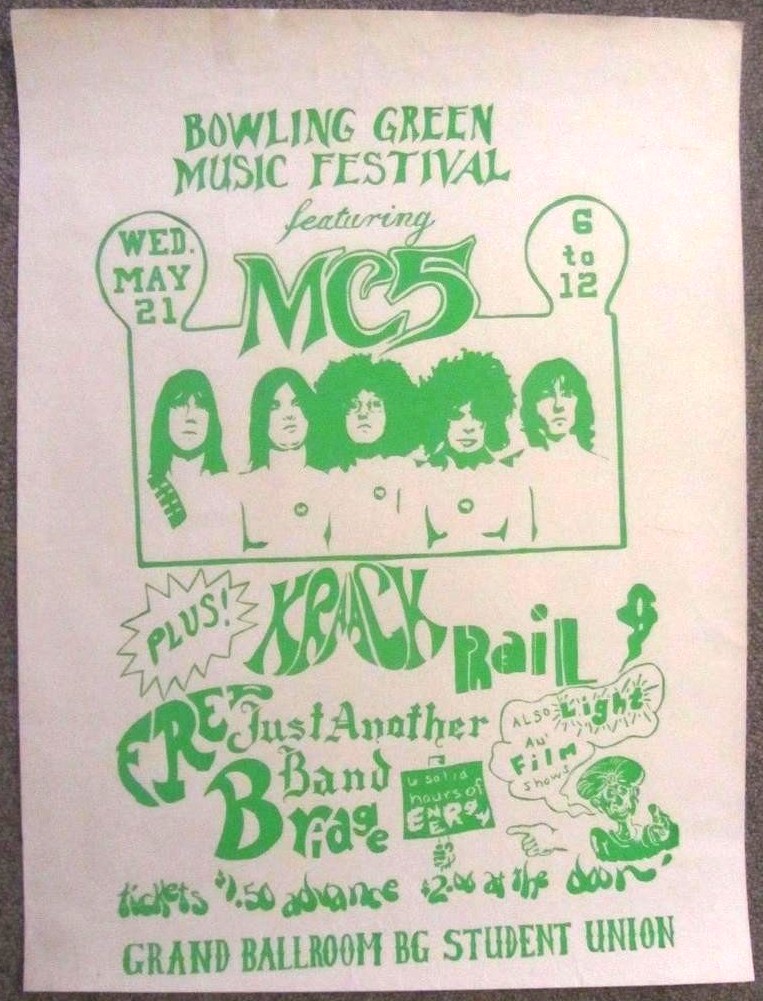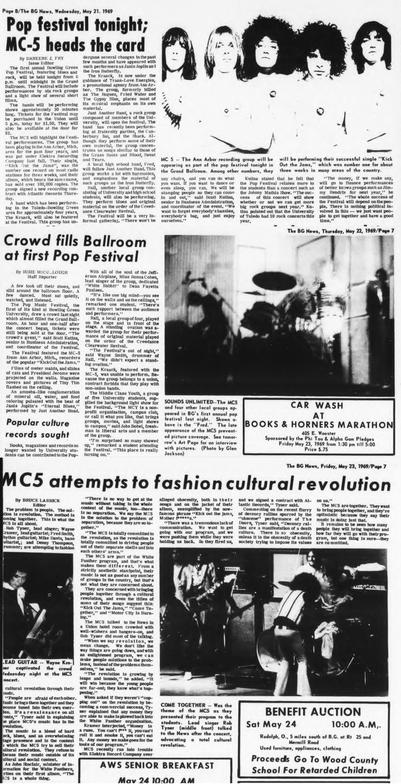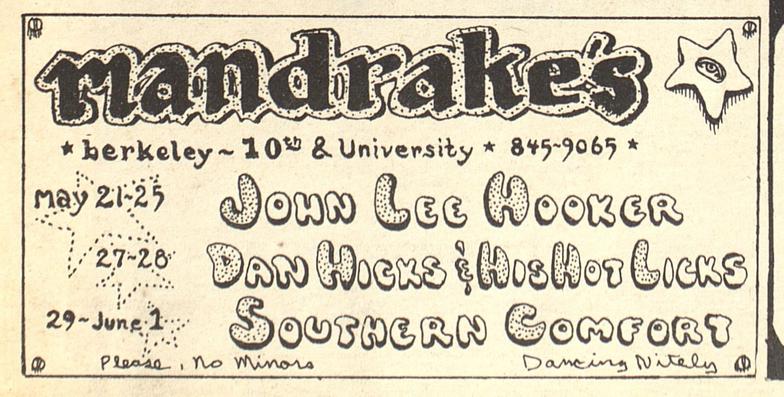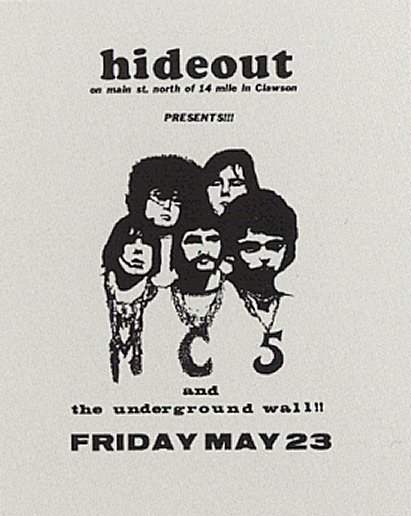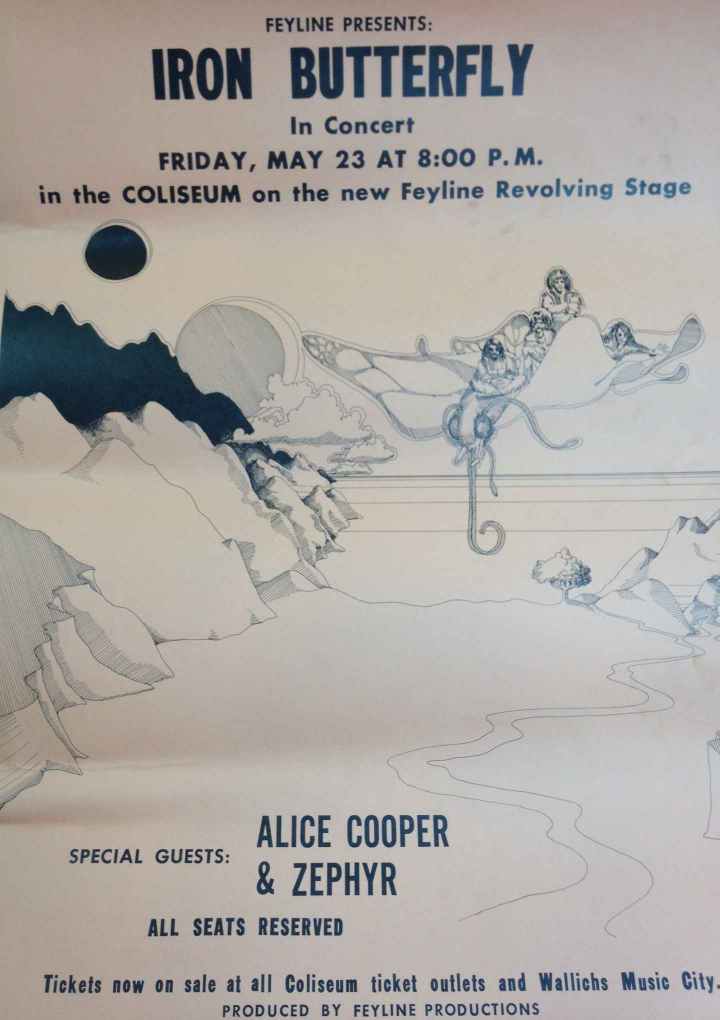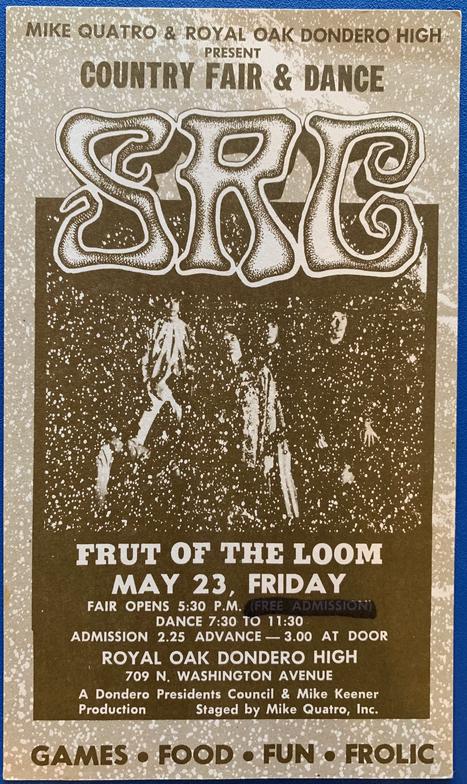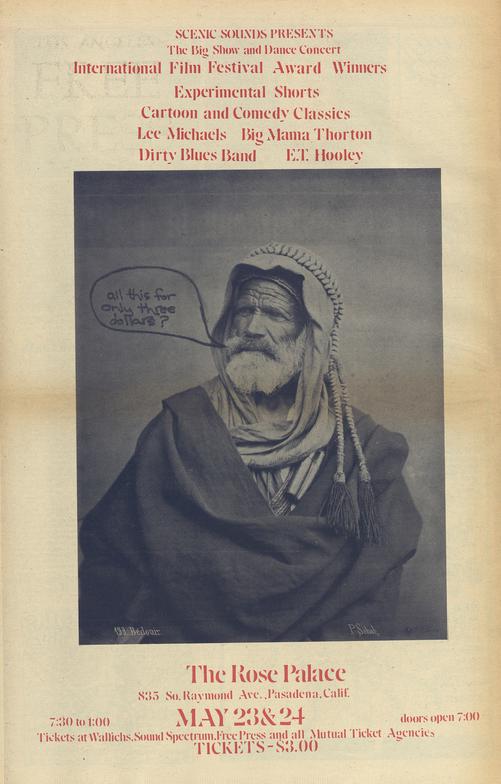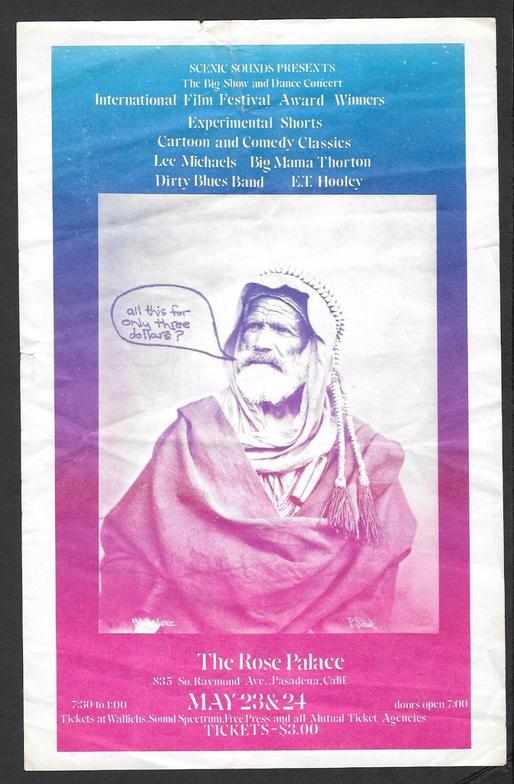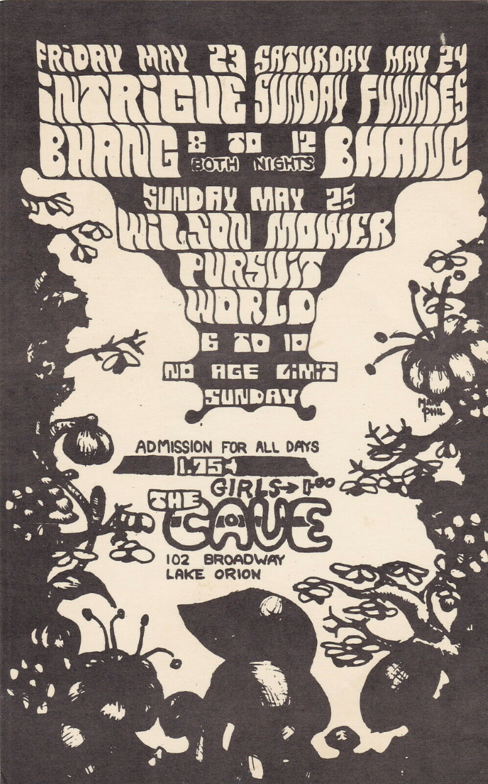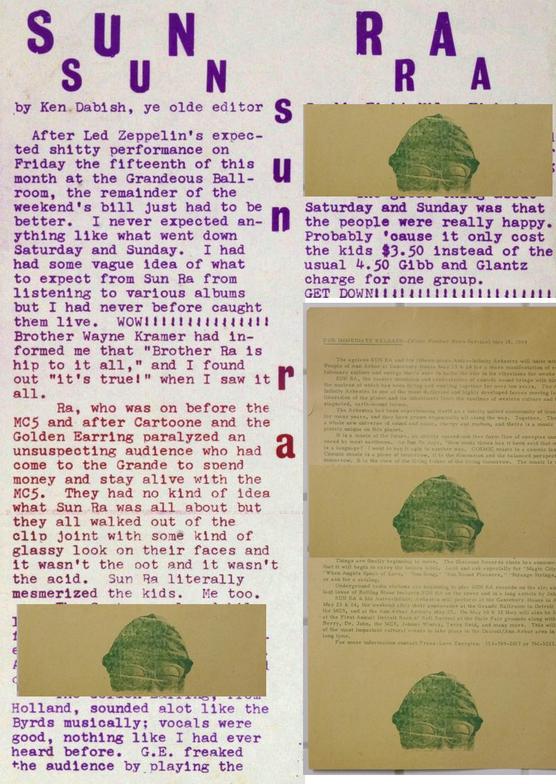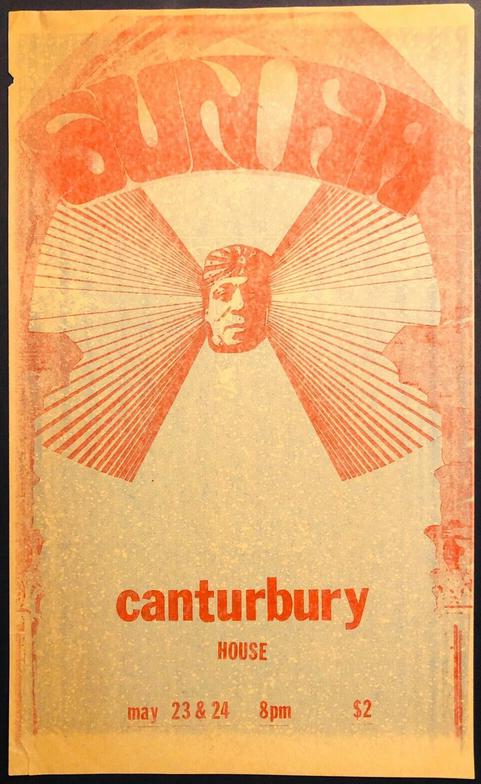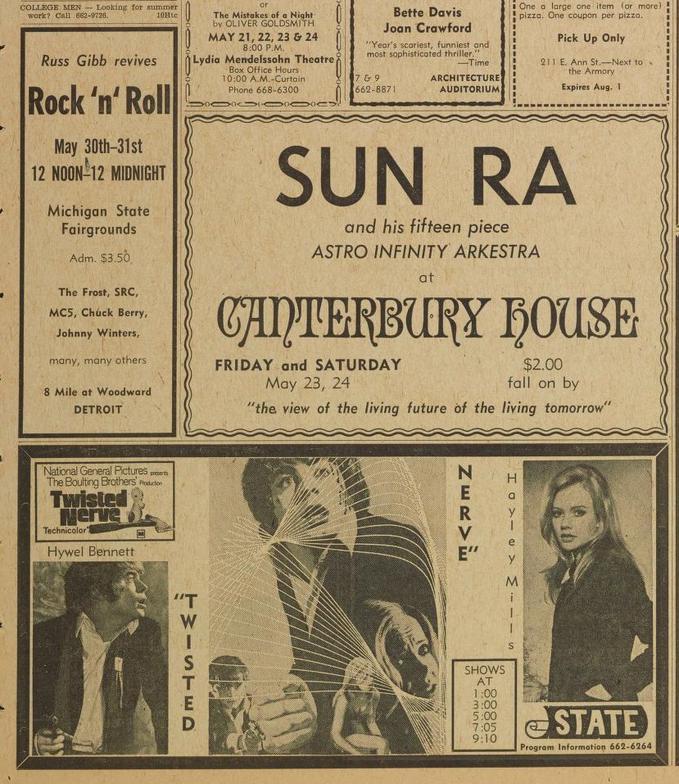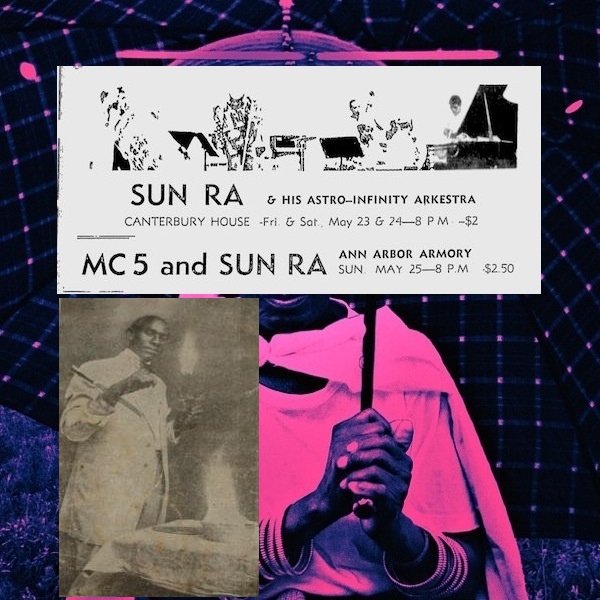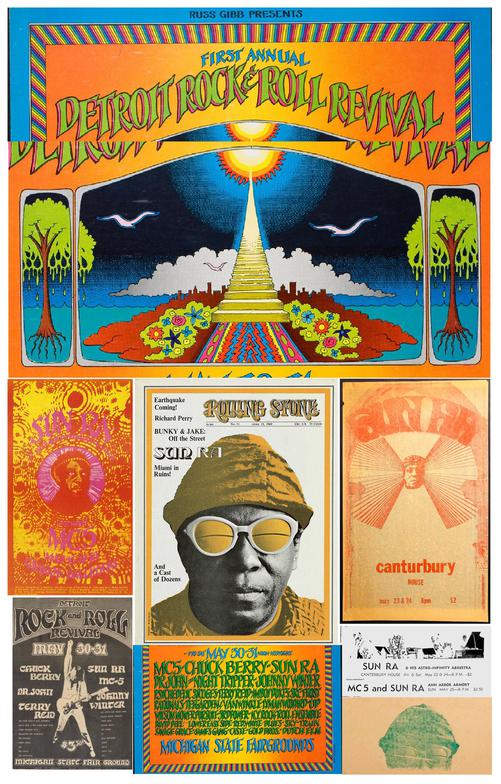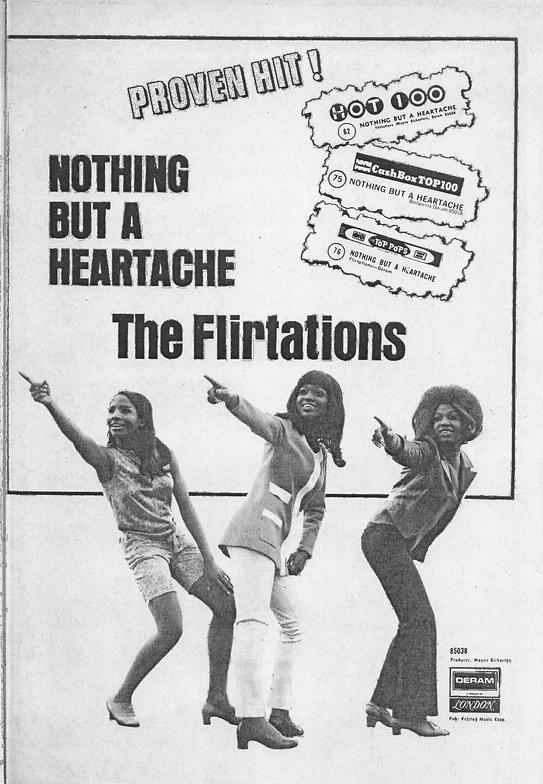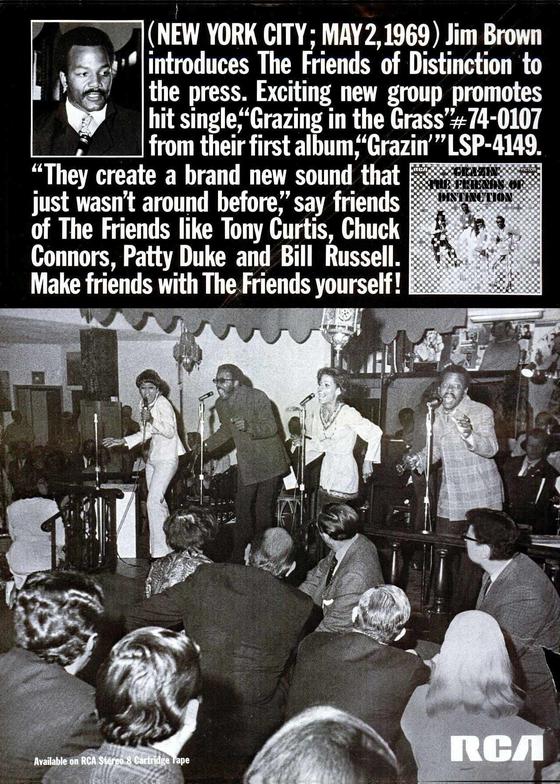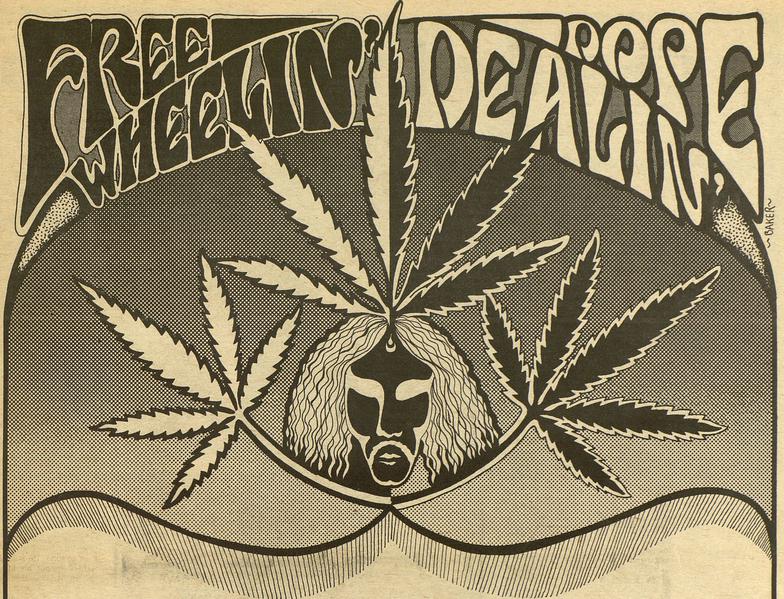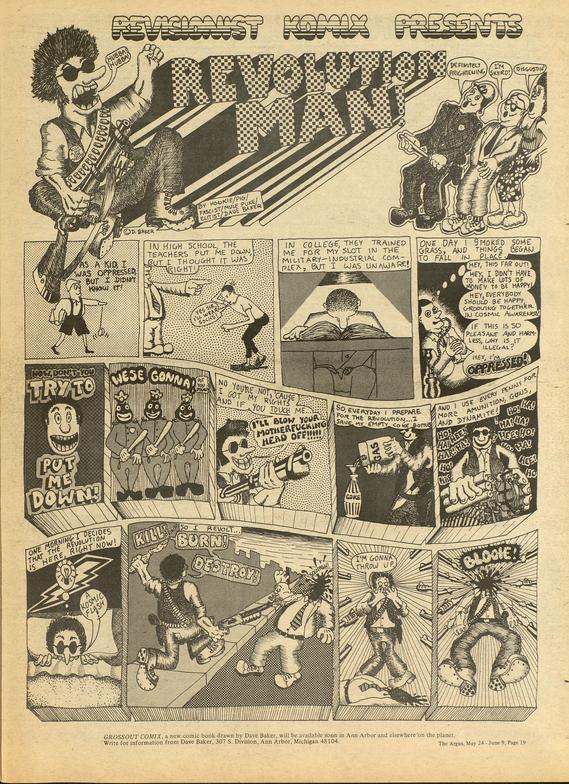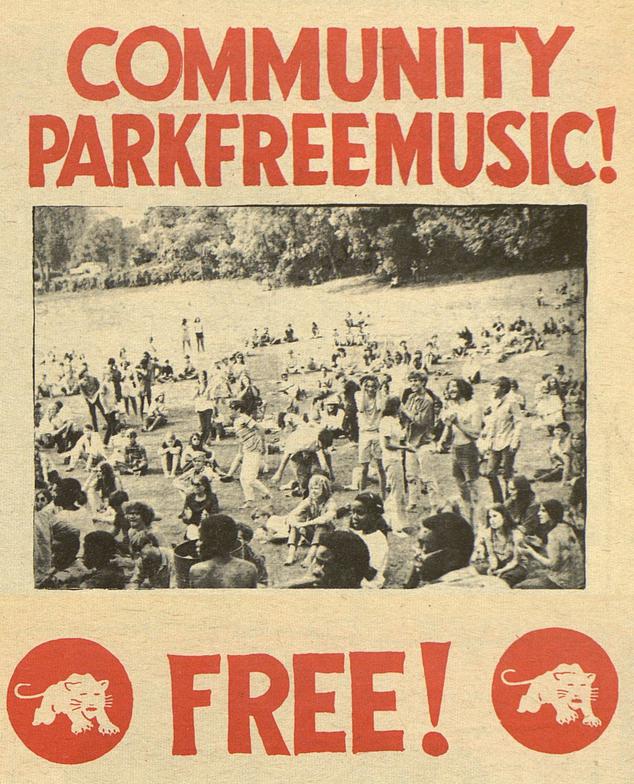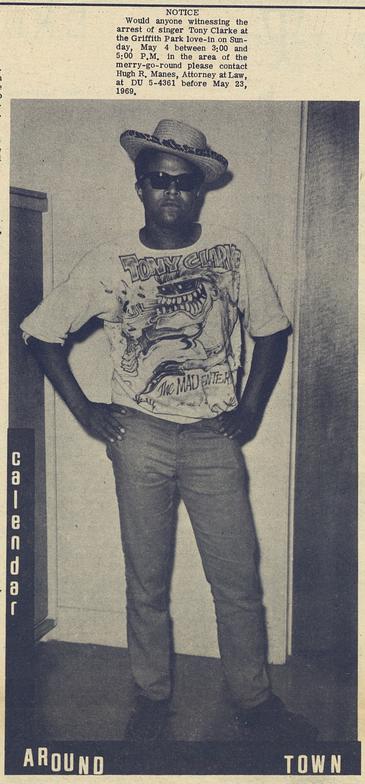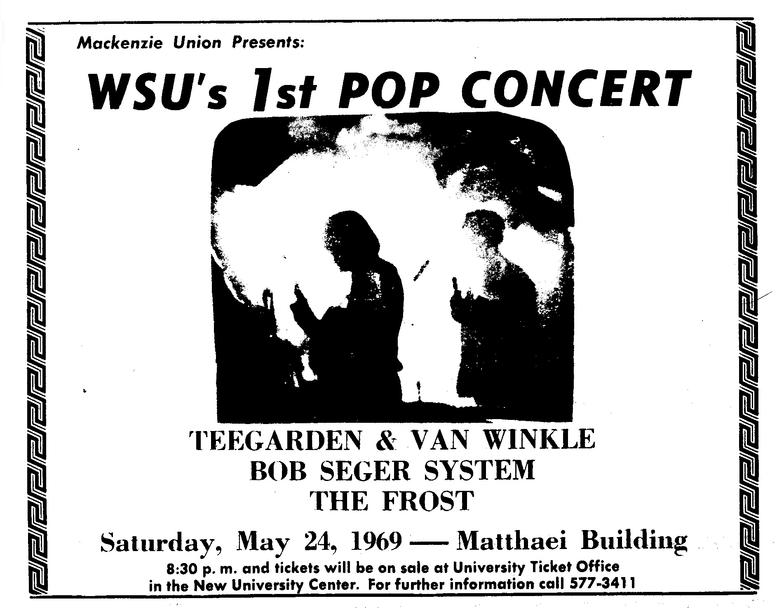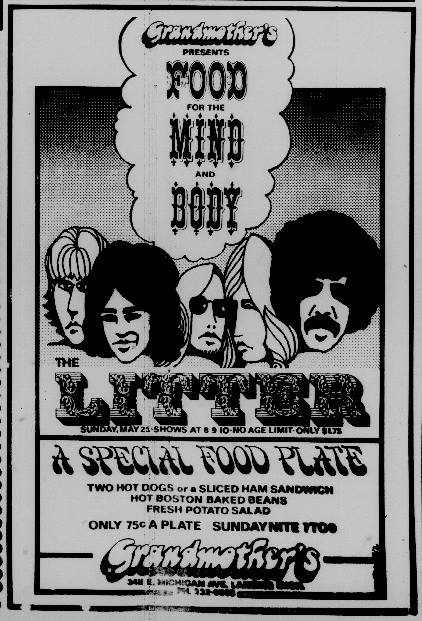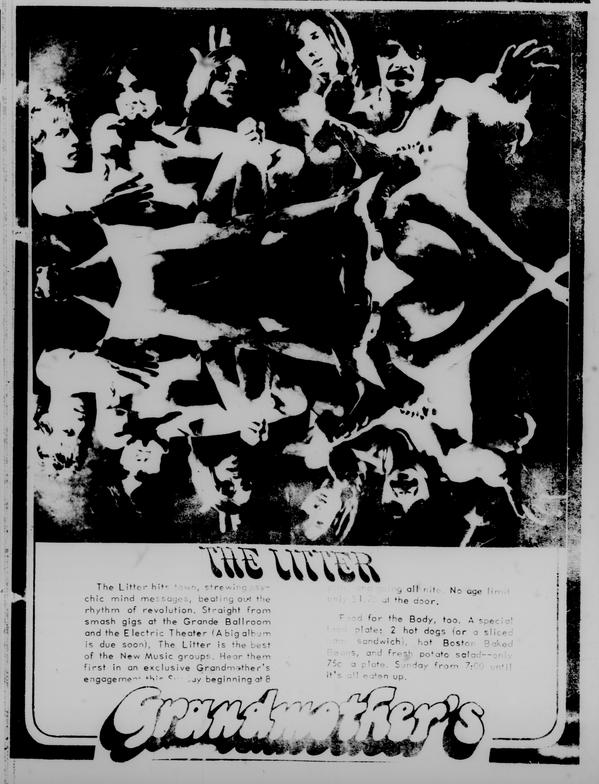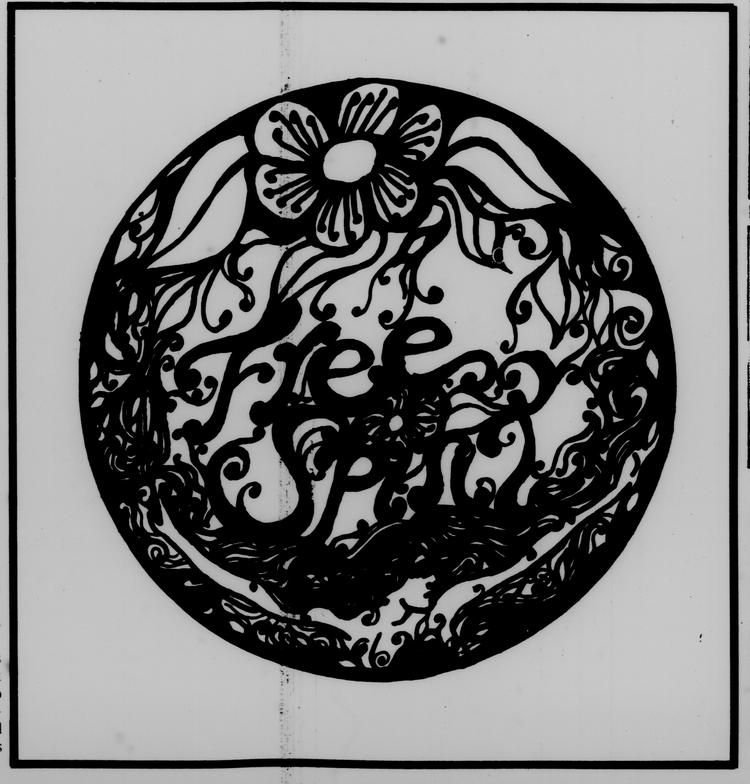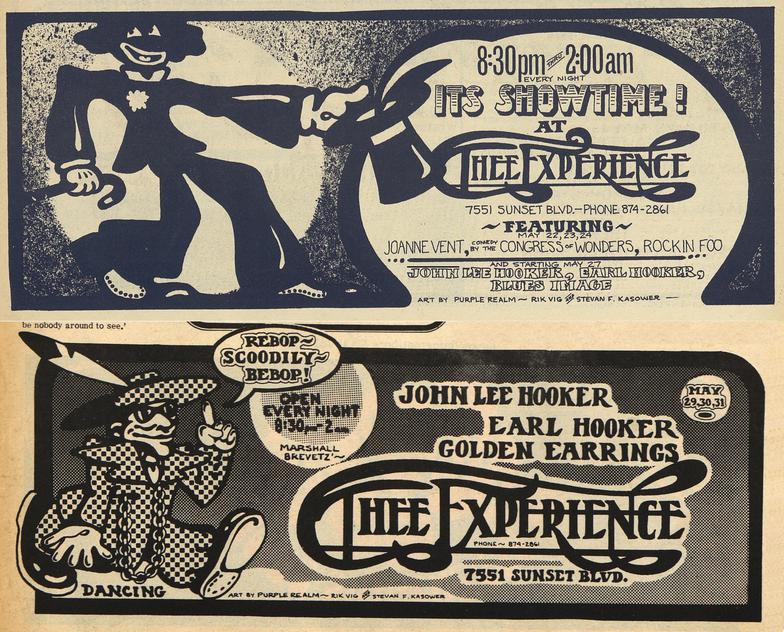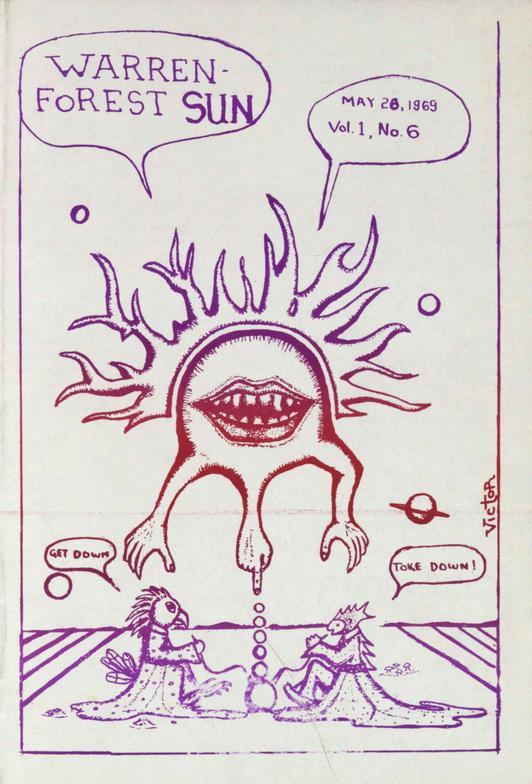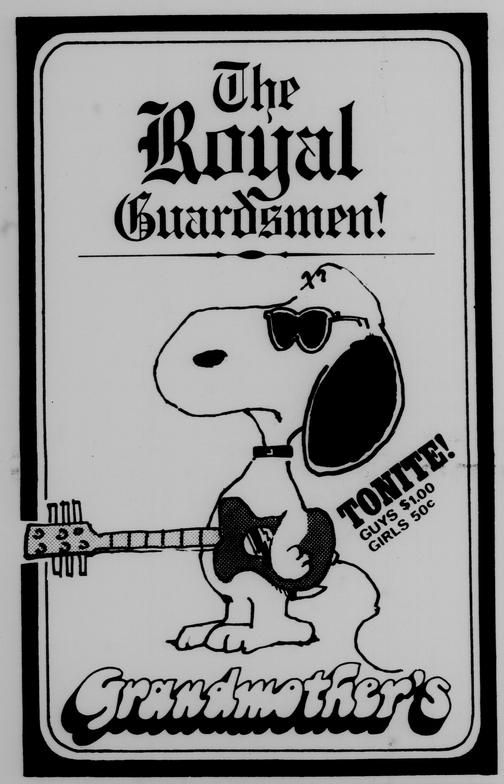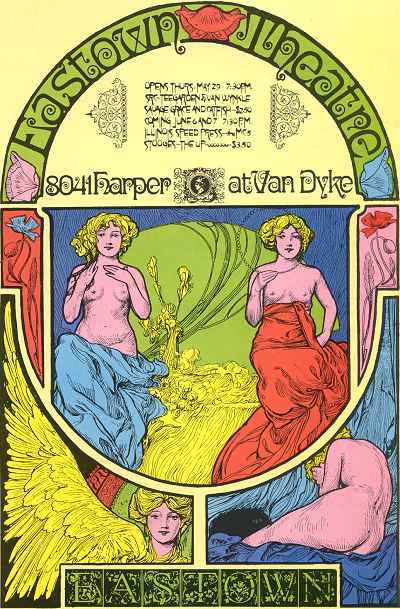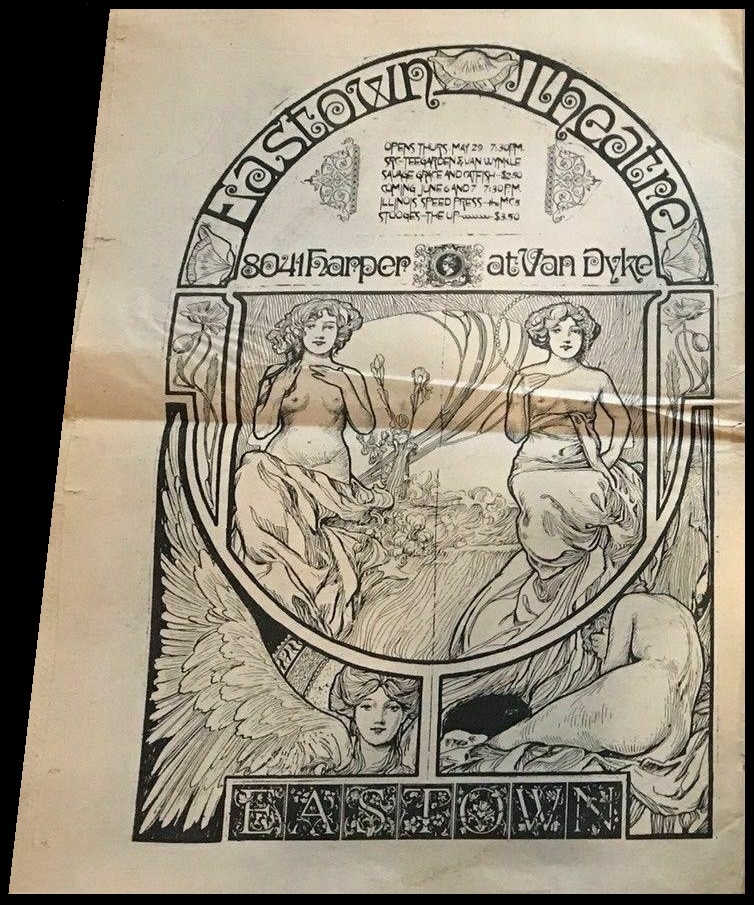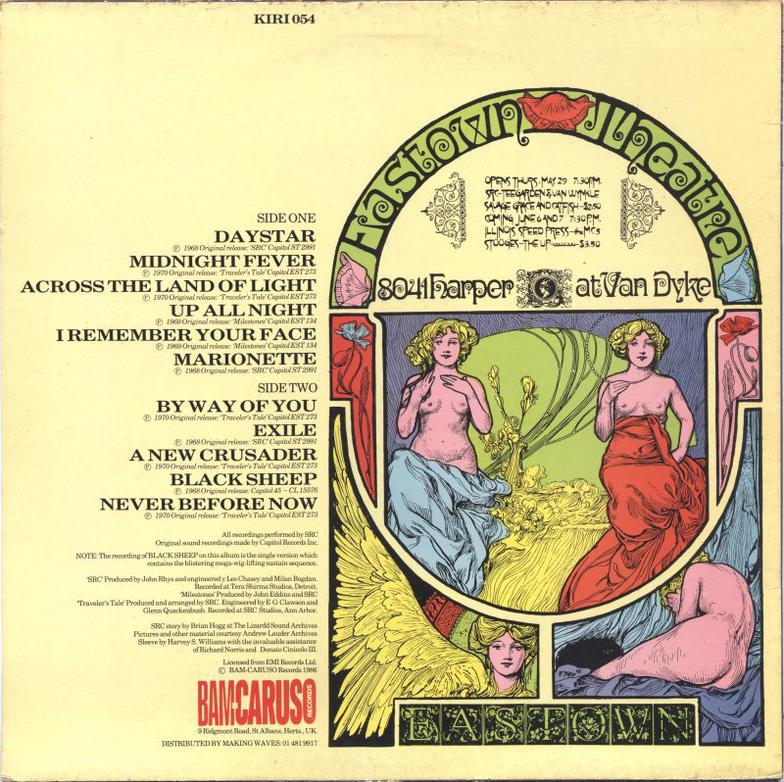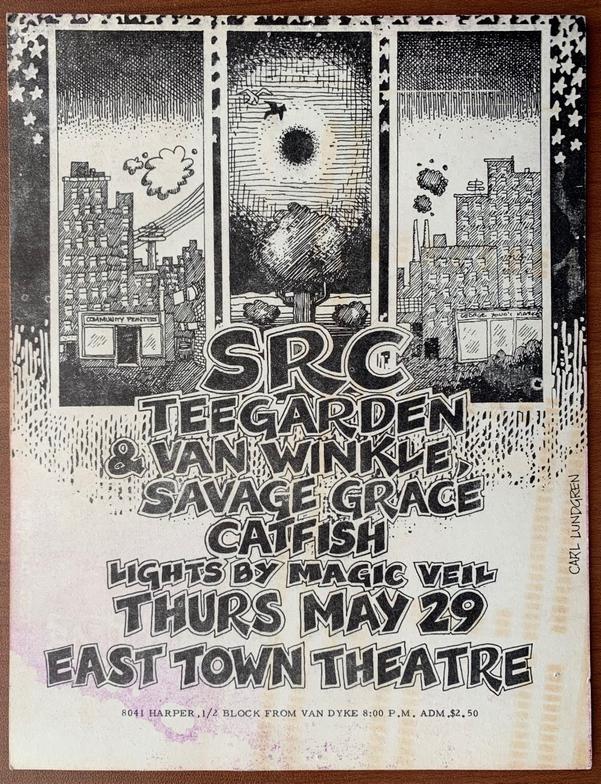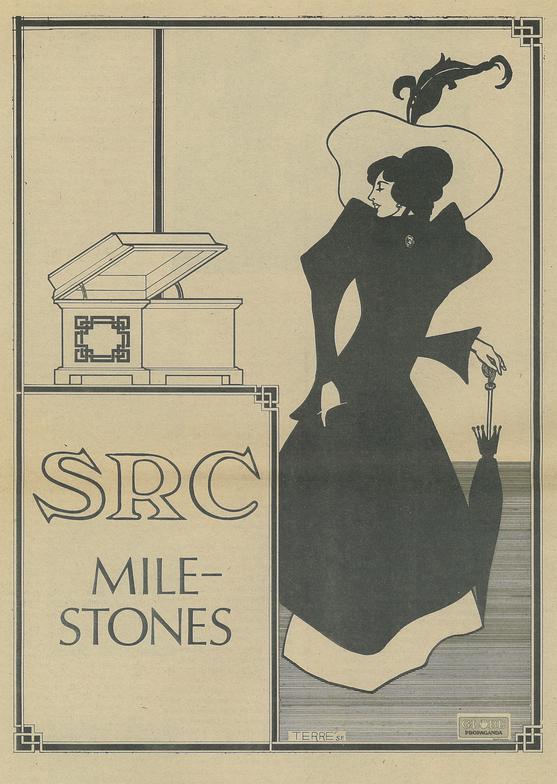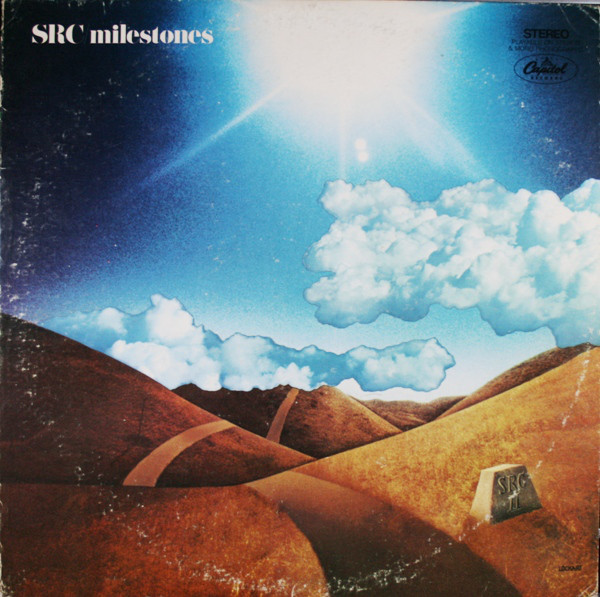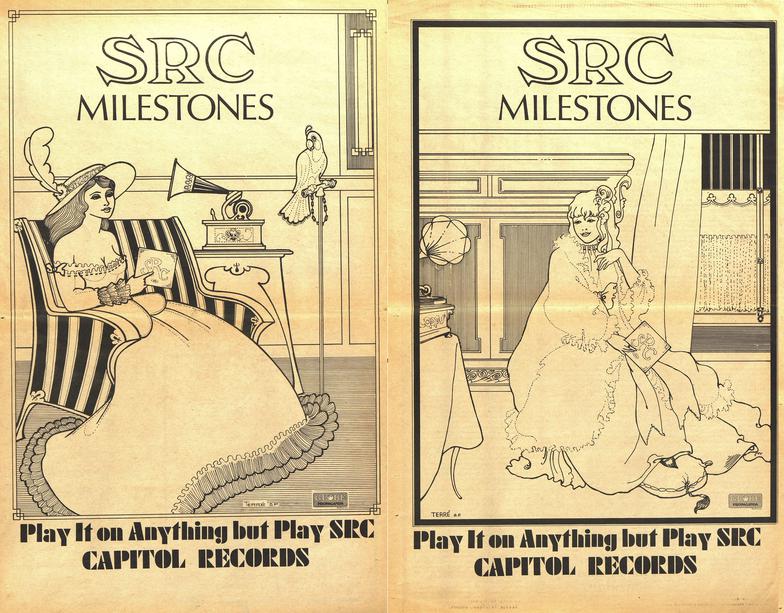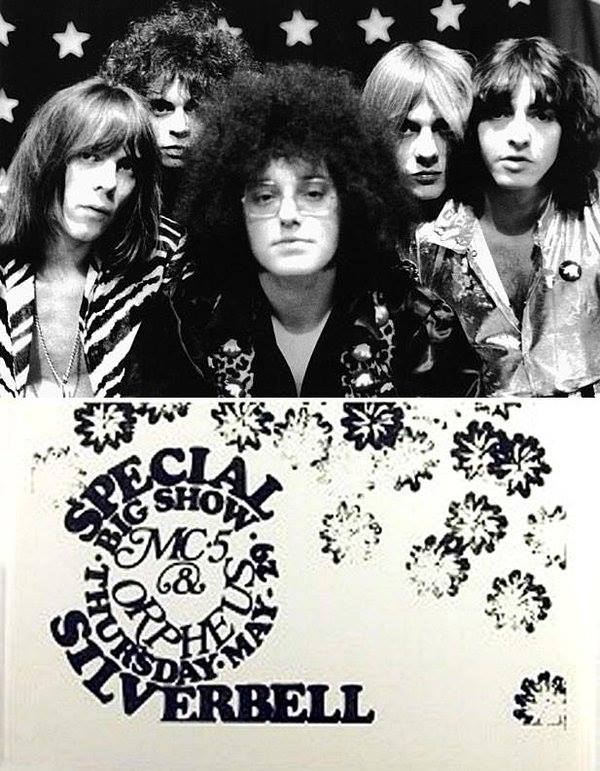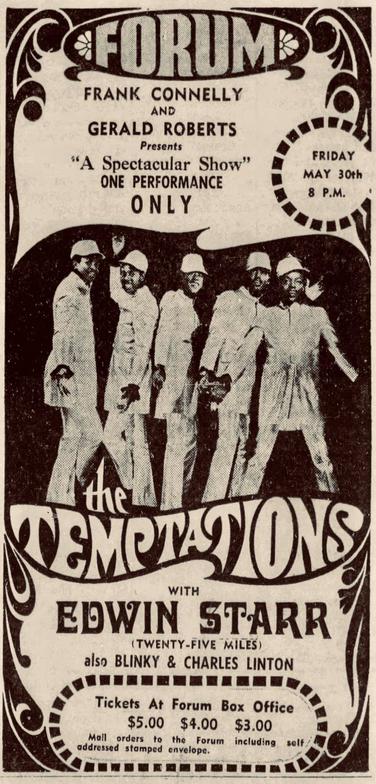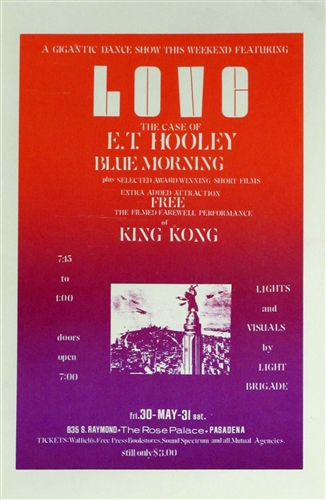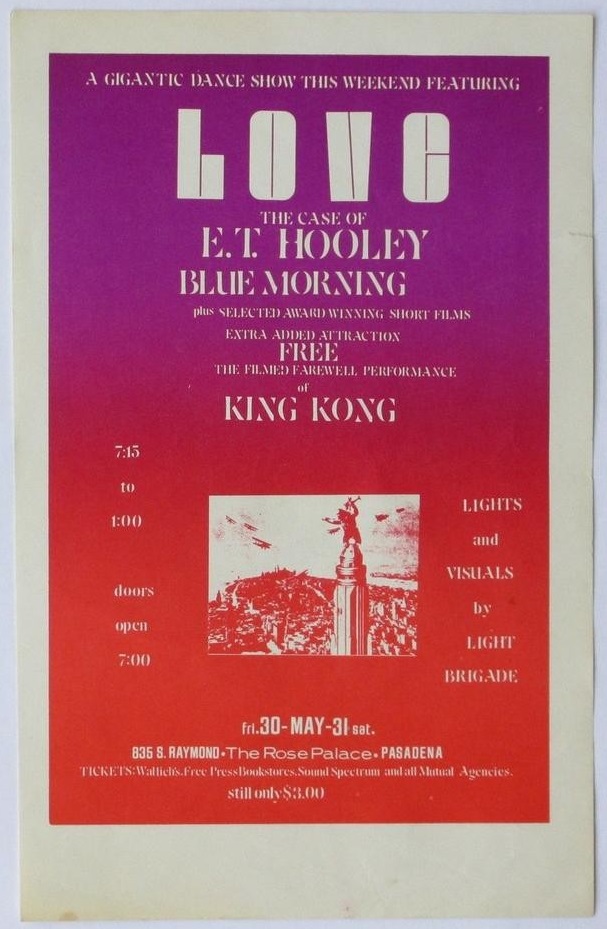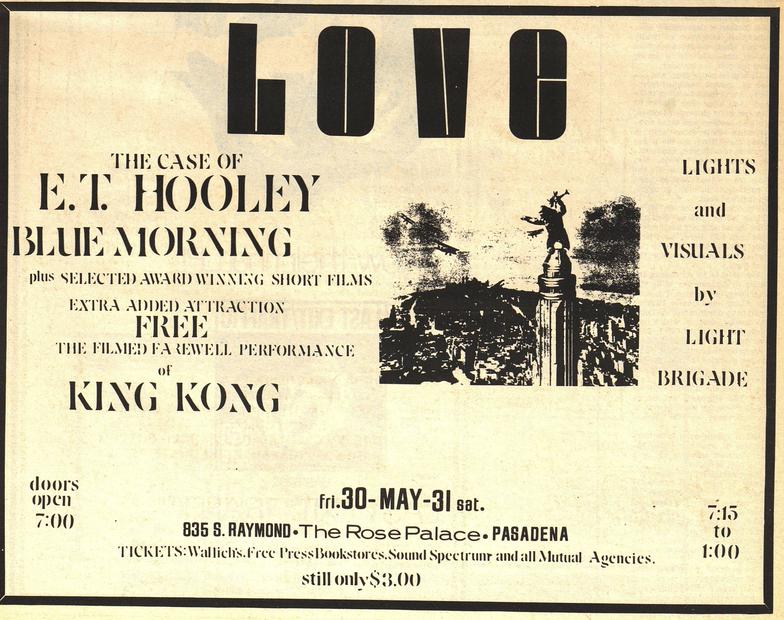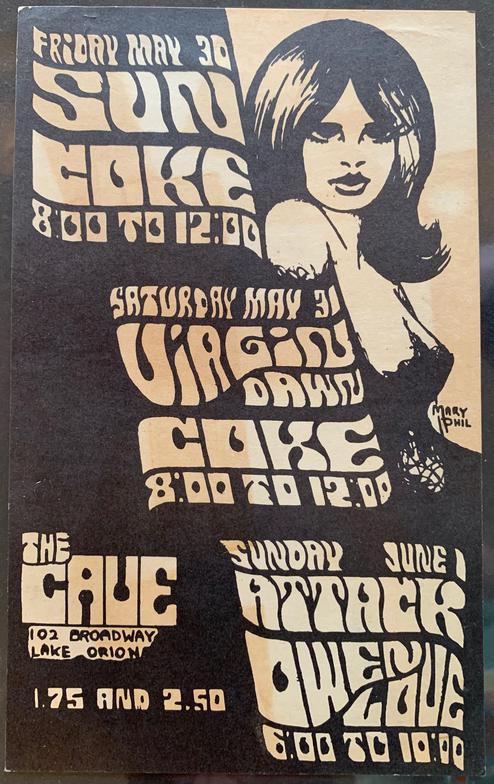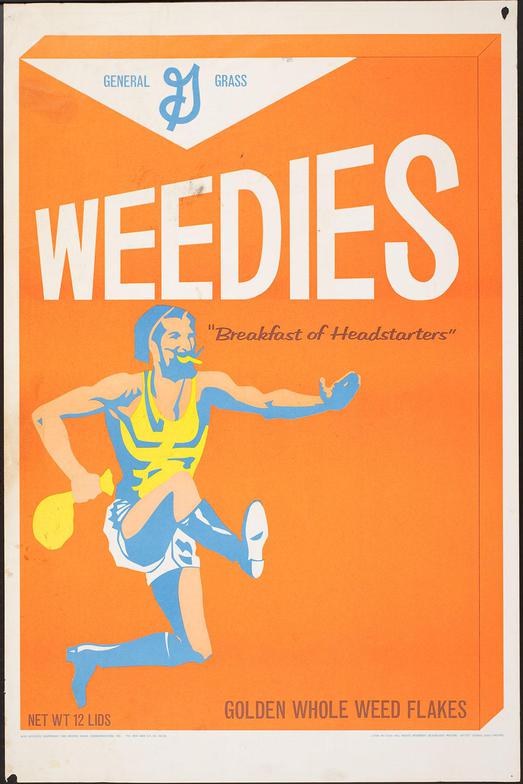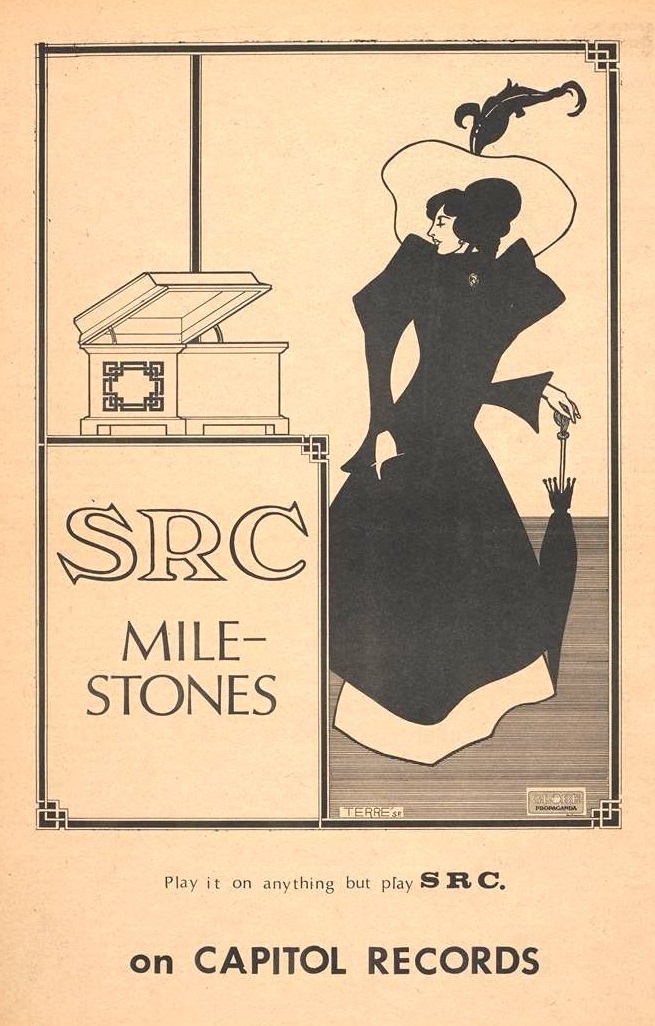Splatt Gallery
Double click here to add text.
Splatt Gallery's History of Michigan Concert Posters
Volume Five - 1969 - Page Ten
**********************************************************
Cool poster by an unknown artist for Mothers of Invention at Ford Auditorium, May 17, 1969.
A full-page ad in CREEM magazine for Mothers of Invention at Ford Auditorium, May 17, 1969.
The Edgewater Amusement Park opened in July, 1927 in Detroit on Seven Mile Road near Grand River. Owner Milton Wagner came up with the Pay One Price (POP) concept, where admission entitled the guest to all rides, all day, and proved so successful that the concept was adopted around the country, and the profits allowed the Wagner family to also buy the Walled Lake Amusement Park.
The park featured a concert hall, the concert database lists numerous big band shows throughout the 1950’s, the last one in 1954 with the Billy May Orchestra, whom we recounted earlier as a mainstay of the old Grande Ballroom.
Concert records get spotty from there, with Bobby Rydell in 1963, Tiny Tim in 1968, the MC5 on May 2, 1969, and this Pop Festival on May 17, 1969, with a poster by an unknown artist featuring the Amboy Dukes, Rationals, Frost, and Frut of the Loom, then another large gap until David Cassidy in 1971. The park closed for good in 1981.
The Chicago band Aorta followed up their February shows at Grandmother’s in East Lansing, Michigan with a one-night return appearance on May 18, 1969. Terry Sharbach’s illustrations of the band members appeared one by one in the State News newspaper in the days leading up to the show.
Poster/ad for the Jimi Hendrix Experience at Madison Square Garden in New York City on May 18, 1969. The openers, Buddy Miles Express, included Detroit guitarist Jim McCarty.
Gary Grimshaw’s Sun Ra poster marked the end of an era for Grande Ballroom posters. There would not be another Grande poster for the rest of 1969, there are a couple of flyers to come, but not any more on the creative quality of Grimshaw, Lundgren, Donnie Dope, or any of the other Grande artists seen so far.
Which is a shame, because we never got a poster for Dr. John the Night Tripper, in his first Michigan appearance on May 21, 1969 at the Grande Ballroom. He performed with the group It’s A Beautiful Day. The next day, It’s A Beautiful Day opened for the Stooges.
And although Joe Cocker had up-staged the Who’s premier of Tommy earlier in the month, they still couldn’t get his name right when he returned two weeks later, on May 23-24, 1969. Joe Cocker & the Grease Band headlined two shows, supported by the James Gang with Savage Grace, and Plum Wine with Third Power.
These were the fourth and fifth Michigan shows for Joe Cocker, who would have ten Michigan shows in 1969.
On Sunday, May 25, the Soul Remains performed, with Train and the UP.
The MC5 at the Bowling Green Music Festival in Bowling Green, Ohio, May 21, 1969, with Kraack, Bridge, Fred, Rail, and Just Another Band.
Veni, vidi, vici - They came, they saw, they conquered. The MC5 got a lot of press when they headlined the first annual Bowling Green Pop Festival in Bowling Green, Ohio on May 21, 1969, with a story the night of the show, a review of the show the next night, and the aftermath still lingered for one more story on the second night following.
An ad for Mandrake’s in Berkeley, California with John Lee Hooker appearing May 21-25, 1969. The engagement had begun a day earlier, on May 20.
A poster by an unknown artist for MC5 with The Underground Wall at the Clawson Hideout, May 23, 1969.
Poster by an unknown artist for the Alice Cooper band’s return to their hometown of Phoenix, Arizona, opening for Iron Butterfly at the Veteran’s Memorial Coliseum, May 23, 1969.
Poster/handbill by Carl Lundgren for SRC with Frut of the Loom at the Royal Oak Dondero High School in Royal Oak, Michigan, May 23, 1969. Uses the same photo, same SRC lettering, and same opening band as on his poster for Schoolcraft College in Livonia, two months earlier. Looks like they decided to charge admission after the posters were printed as the line "free admission" is blacked out by a marker.
In his entertaining autobiography “Knight Moves”, drummer K.J. Knight has a chapter regarding his time with the Cleveland, Ohio band, The Case of E.T. Hooley. Although he may be forgiven for the error (“if you can remember the sixties, you weren’t really there”), he has the year wrong in his account, placing the events of the band’s time in Los Angeles in 1968, while the evidence shows that it was actually 1969.
The details of his story line up with events in 1969. He describes the first show that he saw in LA as being Chicago at Thee Experience club. Chicago performed there on March 19-22, 1969, and in fact, Thee Experience did not open until March 1969.
He talks about meeting blues artist Slim Harpo and recording some tracks with him, and Harpo is known to be in LA at the Whisky A-Go-Go, March 5-9, 1969, and at Thee Experience, March 27-29, 1969.
He describes being the opening act for the Vanilla Fudge at the Rose Palace in Pasadena, the dates for these shows were April 4-5, 1969. We have seen the poster for these shows and the name E.T. Hooley does not appear on it, but there’s no reason not to believe Knight as it was common for last minute additions to a bill to be missing from posters.
He wraps up the chapter, and the band’s time in LA, by saying that they returned to Detroit to perform at the Grande Ballroom, opening for Buddy Guy in November 1968. This is correct, but it would have happened before they went out to LA, not after they returned.
The poster shown above lists E.T. Hooley as one of the performers at the Rose Palace in Pasadena on May 23-24, 1969, and we have a couple more posters coming up.
The three tracks that E.T. Hooley recorded with Slim Harpo in LA were released on Harpo’s posthumous album “Slim Harpo Knew The Blues”, released in 1970 (Harpo’s untimely passing was on January 31, 1970). Here is one of them, we’ll post the other two with the two more E.T. Hooley Pasadena posters that we have also coming up.
Slim Harpo with The Case of E.T. Hooley – The Hippy Song (1969)
https://www.youtube.com/watch?v=33Zfurz2gaI
A short-lived club opened for the summer of 1969 in Lake Orion, Michigan called The Cave, or the Village Cave. This poster by Mary Phil, i.e. Mary Partridge, is for May 23-25, 1969, with appearances by Intrigue, Bhang, Sunday Funnies, Wilson Mower Pursuit, and World. Again, there was a reduced cover charge for girls.t.
When the MC5 returned from their West Coast tour, at the beginning of April, they moved out of the Hill Street commune and into a farm house in nearby Hamburg, Michigan. So, there was plenty of room for Sun Ra and his large band of “the weirdest negroes” to move in with the Ann Arbor Trans-Love group, which they did for half of the month of May, 1969.
Sun Ra – Moon Dance (1967)
https://www.youtube.com/watch?v=i5Lkp7Go-po
While living at John Sinclair’s Trans-Love commune on Hill Street in Ann Arbor in May 1969, Sun Ra lined up some local gigs, including this one at the mis-spelled Canterbury House, May 23-24, 1969.
A newspaper ad for Sun Ra at the Canterbury House in Ann Arbor, Michigan, May 23-24, 1969. Also has an ad for the upcoming Rock & Roll Revival at the Michigan State Fairgrounds, May 30-31.
Sun Ra followed up their two nights at the Canterbury house with a show with their friends, The MC5, at the Ann Arbor Armory. Born Herman Poole Blount, he was named after magician Black Herman, a prominent performer in the early 1900’s and a favorite of Ra’s mother.
The relationship with Detroit went back as far as 1965 when John Sinclair had traveled to New York City to interview Sun Ra for The Fifth Estate, two years later, Sinclair brought them to Wayne State University for their first Michigan appearance. Sun Ra had been given writing credits on the MC5 album, as the song "Starship" was built around a Sun Ra poem.
And as a follow-up to the Grande Ballroom shows, Sinclair had gotten them on the bill for the largest outdoor pop festival to date in Detroit, The First Annual Detroit Rock & Roll Revival at the Michigan State Fairgrounds.
Sun Ra – Rocket #9 (1966)
https://www.youtube.com/watch?v=GcoyJGt1Trs
The late Spring of 1969 was Sun Ra Season in Southeast Michigan. First, Ra & Arkestra performed three nights at the Grande Ballroom in Detroit, May 16-18, opening two shows for Led Zeppelin on Friday, and sharing the bill with Golden Earring and the MC5 on Saturday and Sunday. The next weekend, Sun Ra performed at the Canterbury House in Ann Arbor on Friday and Saturday, then moved over to the Ann Arbor Armory for a Sunday show with the MC5. Five days later, they were one of the closing acts on the first day of the Rock & Roll Revival at the Michigan State Fairgrounds on May 30th.
Discount Records in Ann Arbor announced that they would begin to carry records on the Saturn label, the label which had released the bulk of the twenty-something LP’s that the band had recorded. And during all this activity, it just so happened that Sun Ra appeared on the cover of Rolling Stone magazine, on their issue #31, dated April 19, 1969.
It sounds like one of Motown’s greatest tracks, but it has nothing to do with Motown, other than perhaps as a source of inspiration. The Flirtations hailed from South Carolina, after moving to New York City and a handful of less-than successful records, they packed up and moved to England.
They signed with Parrot Records and toured in support of the label’s star, Tom Jones, then moved over to Deram Records where they were paired with writer/producers Wayne Bickerton and Tony Waddington, who crafted this masterpiece. Criminally, the song never charted higher than #34 on the US charts, reaching that peak on May 24, 1969.
You may also recall that the Flirtations were the opening act on Stevie Wonder's UK tour, back in March.
We love this song so much that we’ve attached two videos for it, the first is a promo video with the group traipsing through the ruins of an English castle in a perfect sign of the times piece, and the second, with better sound quality, is from an appearance on the German TV show “Beat-Club” with a beard-o announcer that you have to check out.
The Flirtations – Nothing But A Heartache (1968)
https://www.youtube.com/watch?v=72mXxaHkHnE
The Flirtations – Nothing But A Heartache (Beat-Club TV show) (1968)
https://www.youtube.com/watch?v=weEeAzfVyz8
An ad in the May 24, 1969 issue of Billboard magazine for the Los Angeles group Friends of Distinction. The group performed in Michigan only a handful of times, the first was opening for Stevie Wonder at Cobo Arena in Detroit in May 1970. They performed at the Michigan State Fair three months later.
There was a show at the University of Detroit in March 1971, and then the final, and oddest, gig at a place called Ben Cox’s High Chaparral in Detroit for thirteen shows during June 1973, the only known shows at this venue.
Friends of Distinction – Grazing in the Grass (1969)
https://www.youtube.com/watch?v=FAK5axiKKhc
Illustration by Dave Baker for an article in the May 24, 1969 issue of The Ann Arbor Argus newspaper that accompanied an article by A. Dealer.
Dave Baker comic page in the May 24, 1969 issue of the Ann Arbor Argus newspaper.
Composite from The Ann Arbor Argus newspaper, May 24, 1969 announcing the re-start of the summer free concerts with Gary Grimshaw’s lettering(?) and photo by Leni Sinclair(?)
A notice found in the May 24, 1969 issue of the Los Angeles Free Press newspaper, inquiring for information about singer Tony Clarke who was last seen being arrested at a love-in at Griffith Park in Los Angeles, California twenty days earlier. The first thing that we noticed was the custom t-shirt that he is wearing in the photo, made by Stanley Mouse.
We don’t know about the outcome of this arrest, but we did find that Clarke had an extensive Detroit connection beyond his Stanley Mouse t-shirt. Born in New York City, he moved to Detroit at age ten in 1950 and became an aspiring amateur singer. His mail-man, Fred Brown, became impressed by his performances, and also had connections in the music business with the likes of Mickey Stevenson, Arman Boladian, and Billy Davis. Clarke recorded singles with all of them, but it was Davis in particular who took him to Chess Records where they co-wrote hits for singer Etta James and where Clarke had his biggest hit with the song “The Entertainer”, released in 1965 (the Stanley Mouse t-shirt has a reference to the song on it).
With the success of “The Entertainer”, Clarke earned top billings at Detroit’s big venues; the Rooster Tail, Phelps Lounge, and the Twenty Grand, and he toured with James Brown and appeared on the Dick Clarke Revue. In 1966 Clarke moved to Hollywood and formed Earthquake Productions with Roger Spotts and even ventured into the movies with a small part in Sidney Poitier’s “They Call Me Mr. Tibbs”.
Clarke commuted back and forth to Detroit, mainly to see his estranged children who lived with their mother and Clarks’ ex-wife Joyce Elaine, and eventually he moved back to Detroit permanently, until one early morning on August 28, 1971, when he was alleged to have broken into his estranged wife’s home armed with a tire jack, and Joyce Elaine shot him dead in self-defense. His extensive discography garnered even more respect after his passing, in particular, his final Chess record “Landslide”, which became a Northern Soul classic.
Tony Clarke – Landslide (1967)
https://www.youtube.com/watch?v=MbEo2WD5I84
An ad for the “1st Pop Concert” at Wayne State University in Detroit, Michigan, featuring Teegarden & Van Winkle, the Bob Seger System and Frost on May 24, 1969.
Terry Sharbach added the Minneapolis band, The Litter, to his growing collection of illustrations with their appearance at Grandmother’s in East Lansing, Michigan on May 25, 1969.
Earlier, we featured their classic “Action Woman”, this track from their final album (until a reunion thirty years later) is one of the gnarliest renditions of the old Burt Bacharach chestnut.
The Litter – Little Red Book (1969)
https://www.youtube.com/watch?v=D-Ygbe5hsxE
A second, more psychedelic, ad, by an unknown artist, for The Litter at Grandmother’s in East Lansing, Michigan on May 25, 1969.
A mysterious orb, tantalizing in its lack of specificity, that appeared in the May 27, 1969 issue of the State News newspaper in East Lansing, Michigan, was the first public indication of the coming of the Free Spirit boutique of stores that would open about two months later.
A pair of ads for John Lee Hooker at Thee Experience in Los Angeles, California, May 27-31, 1969.
Despite having been in Ann Arbor for over a year and publishing as The Sun, or The Ann Arbor Sun, the paper would occasionally issue as the old Warren-Forest Sun. This May 28, 1969 cover artist was Ken Victor.
Illustration, possibly by Phil Frank, for what may be the only Michigan appearance by the Royal Guardsmen from Florida, at Grandmother’s in East Lansing, May 28, 1969. The group had enjoyed a good three-year ride on songs about Charles Schulz’s Snoopy character.
Royal Guardsmen – Snoopy vs. the Red Baron (1966)
https://www.youtube.com/watch?v=Oxzg_iM-T4E
The Eastown Theatre was built in the second wave of opulent movie theaters in Detroit, opening in 1930 on Harper Avenue near Van Dyke. After nearly four decades of operation, it closed in 1967 and had been vacant for two years when a recent graduate of Mackenzie High School, born in Greece and raised by his aunt and uncle in Detroit, named Bob Bageris, somehow got the opportunity to convert it into a concert hall, and opening on May 29, 1969, he became the city's first competitor to Russ Gibb and his Grande Ballroom.
An awesome poster by an unknown artist. The opening night's acts were SRC, Teegarden & Van Winkle, Savage Grace, and Catfish.
The poster for the opening night at the Eastown Theater in Detroit, Michigan on May 29, 1969 as it appeared on the back cover of an upcoming supplement issue of CREEM magazine.
The poster also showed up on the back cover of a 1987 SRC compilation album called “The Revenge Of The Quackenbush Brothers”, still no clue as to the artist.
Carl Lundgren’s poster/handbill for the opening night of the Eastown Theatre in Detroit, May 29, 1969. Note the proper name of the venue is one word with just one “t”, unlike this first poster.
When they played the opening night of the Eastown Theatre, SRC had already released their second album, "Milestones" on Capitol Records, the advertising campaign included a series of art-deco inspired posters by an artist Terre.
SRC – Up All Night (1969)
https://www.youtube.com/watch?v=I6CyoYSlL-M
Two more in the series of posters by Terre for the Capitol Records release of the second SRC album.
A quick gig at Punch Andrews’ Silverbell Hideout in Auburn Hills, Michigan, May 29, 1969, for the MC5, the night before the Rock & Roll Revival, with a poster by an unknown artist.
A nice ad for a show at the Forum in Montreal, Quebec, Canada on May 30, 1969 with the Temptations, Edwin Starr, Blinky, and local Montreal singer Charles Linton.
Two versions of the poster/handbill for another California appearance by The Case of E.T. Hooley, featuring drummer K.J. Knight, opening for Love at the Rose Palace in Pasadena, May 30-31, 1969.
Newspaper ad for The Case of E.T. Hooley, featuring drummer K.J. Knight, opening for Love at the Rose Palace in Pasadena, May 30-31, 1969.
Poster/handbill by Mary Partridge and Phil for The Cave in Lake Orion, Michigan, May 30, 1969 through June 1, 1969, including Virgin Dawn, and the seldom-seen bands, Coke, Sun, Attack, and Owen Love.
A popular 1969 poster by artist Dennis Dent, who later became known for his live painting performances, which he called his “Two-Fisted Art Attacks”. Using brushes and bare hands, he would speed-paint portraits, doing a “dance on canvas” wildly flailing about to loud music. He performed onstage at the Woodstock ’94 concert, his subjects were mostly musicians, but also included famous figures such as Albert Einstein, Martin Luther King, and Gerald Ford, whom after he had finished his portrait in eight minutes, told Ford. “I’m out to disturb the heart of the nation. I’ve got no time to lose”.
His portrait of Jim Morrison can be seen on the wall of the shop in the TV show “Pawn Stars”, and his paintings have been traded over the counter in episodes of the show.
Volume Five - 1969 - continues - HERE


